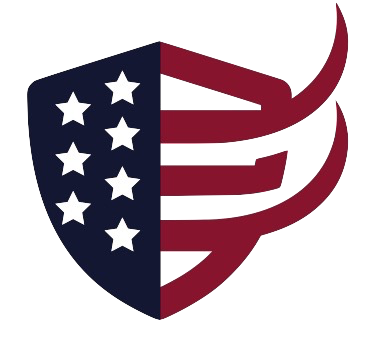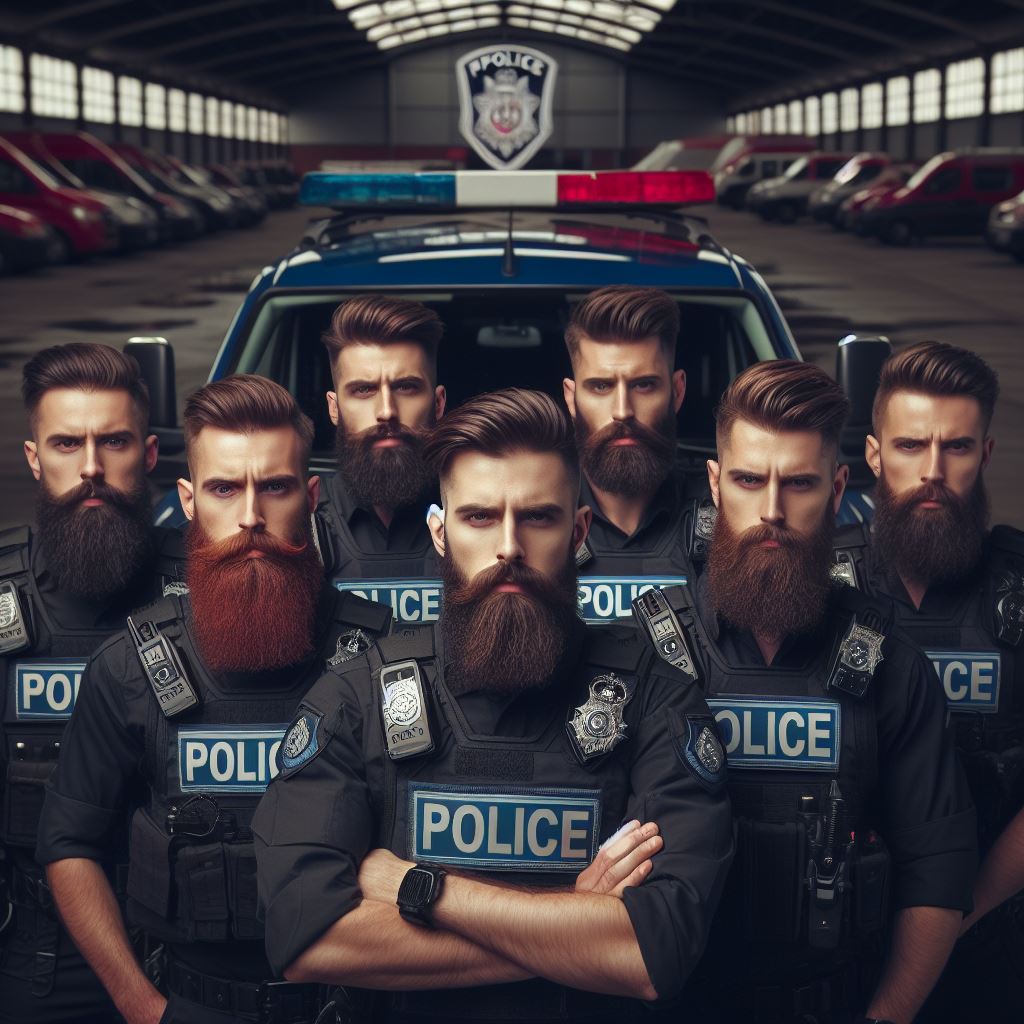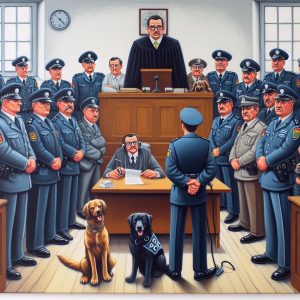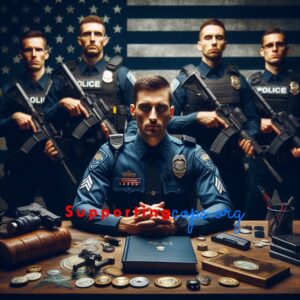Can Cops Have Beards?
For over a century, police officers in the United States have traditionally been required to maintain a clean-shaven appearance while on duty. This requirement is based on the need to portray discipline and uniformity, as well as concerns over safety and effective use of equipment like gas masks. However, in recent decades many officers and departments have challenged these strict grooming policies, arguing for more freedom of personal expression and pointing out lack of evidence for some safety concerns.
History of Police Grooming Standards
Traditional Clean-Shaven Policy
Since the establishment of early police departments in the 19th and 20th centuries, cops have been expected to arrive at work clean-shaven and with short, neat haircuts. This requirement served the image of officers as disciplined public servants and allowed the public to clearly identify police among crowds. Clean-cut grooming policies also arose from the military background of many early police forces.
Arguments for Allowing Beards
While strict grooming codes persisted for over a century in American law enforcement, some officers began to advocate for more flexibility around the 1960s and 70s. Arguments centered around allowing more freedom of personal expression, boosting officer morale and retention, and more accurately representing the diversity of communities served. Cases of officers following faiths with religious grooming exemptions also brought attention to the issue.
Reasons Police Departments Restrict Beards
Uniform Appearance
The desire for police officers to maintain a consistent, professional appearance remains one of the driving reasons many departments still ban or regulate beards. Keeping officers clean-shaven contributes to the image of discipline and promotes the identifiable look of a police force.
Project Professional Image
Requiring shaved faces reinforces the look of seriousness and public service expected of police officers. Many policymakers argue beards would undermine perceptions of authority.
Identify Officers Clearly
Mandating uniforms and short hair alongside clean-shaven faces helps the public reliably recognize cops in crowds. Rapid visual identification is considered crucial for both community relations and emergency response.
Safety Concerns
In addition to appearance standards, restricting facial hair stems in part from arguments around occupational safety. However, evidence backing up some of these concerns proves limited.
Gas Masks Need Tight Seal
Officers may need to occasionally don gas masks in response to chemical attacks or accidental releases. Some departments state beards prevent masks from properly sealing on faces, thus exposing officers to contamination.
Can Be Grabbed in Confrontation
Another argument holds that the close-quarter struggles police enter into could allow suspects to grab onto beards as handholds, jeopardizing officer safety.
Arguments for Allowing Beards
While restrictions persist in many areas, officers calling for more facial hair freedom emphasize countervailing arguments around rights, morale, community relations, and reconsidering the evidence basis behind policies.
Personal Expression
In recent decades cops have increasingly vocalized their desire for policies recognizing their personal autonomy and self-image rights around grooming choices.
Morale and Retention
Police unions now frequently advocate for easing restrictions as a way to enhance job satisfaction and pride for officers. Allowing more self-expression is also believed to help retain experienced officers who would otherwise leave over grooming codes.
Represent Community
Minority officers and police reform advocates also argue that allowing neatly-kept beards better represents the diversity of communities served by recognizing different cultural grooming choices.
Medical and Religious Exemptions
Cases involving officers’ requesting exemptions from no-beard rules due to medical conditions or religious practices have also drawn substantial attention.
Skin Conditions
Officers struggling with pseudofolliculitis barbae (razor bumps) and other shaving-related skin conditions have challenged department policies.
Religious Beliefs
Sikhs, Muslims, Jews and officers following certain denominations argue beard bans infringe on religious expression rights. High-profile lawsuits have forced policy changes around religious exemptions.
Evidence Does Not Show Increased Risk
A 2022 study failed to demonstrate increased injury risk for officers with facial hair. Experts arguegas mask efficacy concerns remain theoretical rather than evidence-backed. These counterarguments have increasingly carried weight in toppling long-unquestioned rules.
Department Policies Are Evolving
While clean-shaven policies dominated American law enforcement for over a century, a shifting culture has led many departments to relax restrictions in recent years. However, concerns over discipline and safety continue to drive more cautious policy evolutions rather than radical overhauls.
Growing Trend Toward Allowing Beards
High-profile lawsuits, shifting attitudes, and calls to boost officer morale have combined to substantially move the needle on facial hair allowances over the past 10-20 years.
High-Profile Cases Brought Attention
Lawsuits over religious rights, especially for Sikh and Muslim officers wearing beards consistent with faith practices, have forced many departments to adopt religious exemption policies and reconsider evidence behind past rules.
Data Shows Minimal Issues in Practice
A critical mass of departments now allowing beards for all or some officers has provided growing data that contradicts theoretical safety issues like increased injuries or equipment failures. Positive or neutral experiences continue to drive adoption of more permissive policies.
Typical Regulations on Beard Length and Style
While the clean-shaven tradition still exerts influence, most agencies easing policies avoid outright bans in favor of regulating beard length, neatness, and maintenance to balance officer desires against lingering appearance and equipment concerns.
Must Keep Neat and Trimmed
The most common condition for allowing facial hair is keeping it short and tidy to avoid looking unkempt. 1/4 inch to 1/2 inch length rules help address worries over disciplinary image.
No Longer Than 1/2 Inch
Setting a maximum beard length reassures departments that identification and use of safety equipment will not be too compromised while respecting officers’ wishes within reason.
Conclusion
The evolution of American police beard policies reflects a gradual cultural shift driven by advocacy and accumulating practical evidence. While understandable caution lingers in some quarters, a balanced approach recognizing officers’ freedom of expression alongside duty needs has taken root and will likely continue progressing. Careful, incremental policy adjustments acknowledge the humanity behind the badge without abandoning obligations around public service and safety.
Balance of Officer Rights and Department Needs
Blanket bans have clearly eased toward more nuance. Most agencies now acknowledge room for compromise between rigid traditions and officer desires around identity. Continuing this balanced evolution remains key.
Culture Gradual Changing but Caution Remains
Despite undeniable movement, policies rightfully evolve slowly in hazardous vocations like law enforcement. Lingering safety questions will likely warrant ongoing evidence review and measured policy adjustments into the future.
FAQs
What percentage of departments allow beards?
Around 25-35% of police departments now allow some form of facial hair, up from virtually zero before the 2000s. Most adopt length and grooming restrictions rather than unfettered allowance.
Have court cases supported beard bans?
Federal appeals courts have issued mixed rulings on legal challenges to beard prohibitions. However, settlements and legal pressure frequently lead local agencies to alter restrictive policies in practice regardless.
Can female officers have long hair?
Yes, female officers typically face fewer restrictions around hair length and styling than male counterparts, though some standards around professional appearance still apply.
Are mustaches subject to same rules?
Traditionally most agencies banning beards allowed neatly-trimmed mustaches. However, some have prohibited all facial hair. Recent shifts mostly incorporate mustaches within wider beard allowances.
Can undercover cops wear beards?
Yes, undercover officers have long maintained exemptions from grooming policies to more easily blend in and conceal identities while investigating cases.







